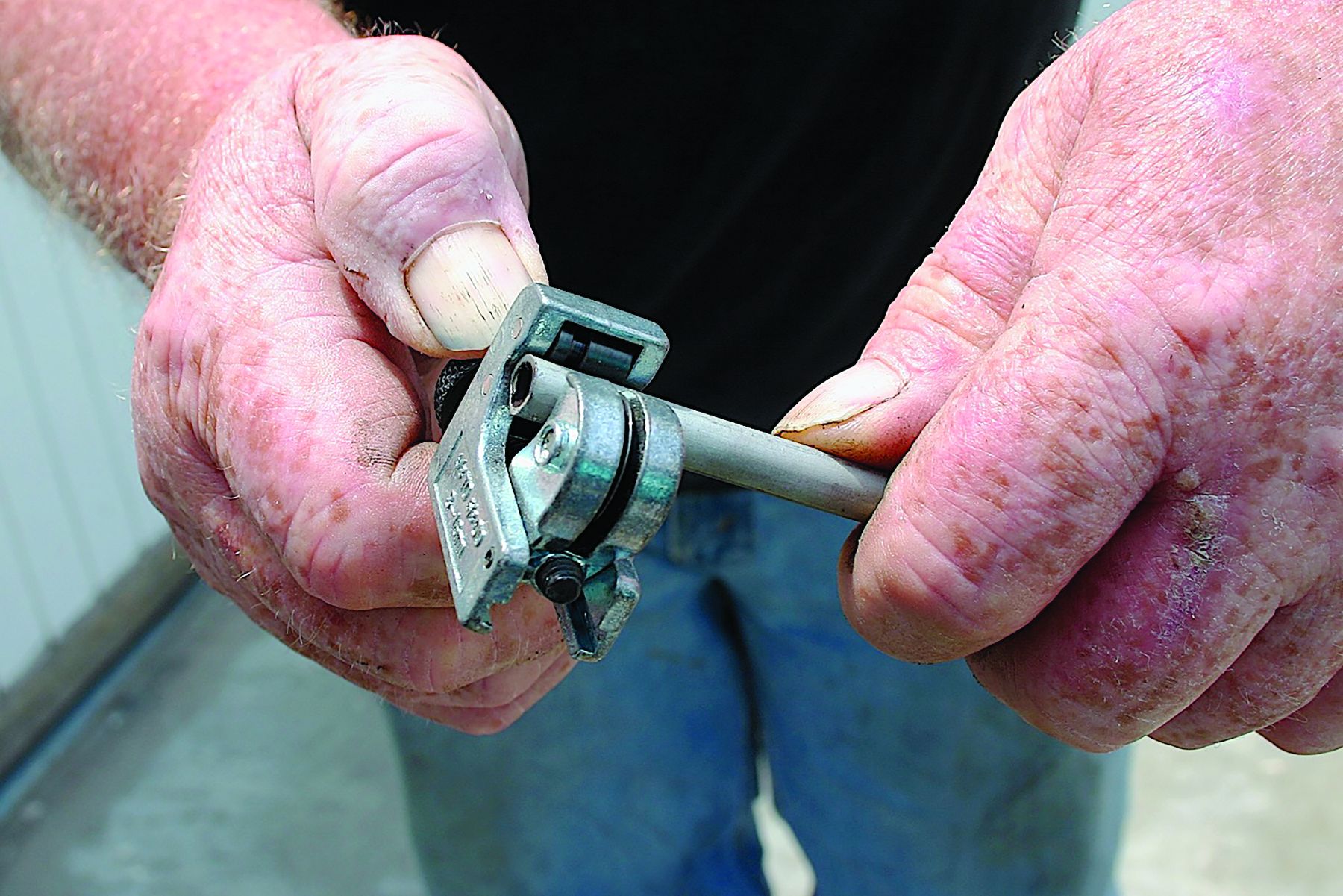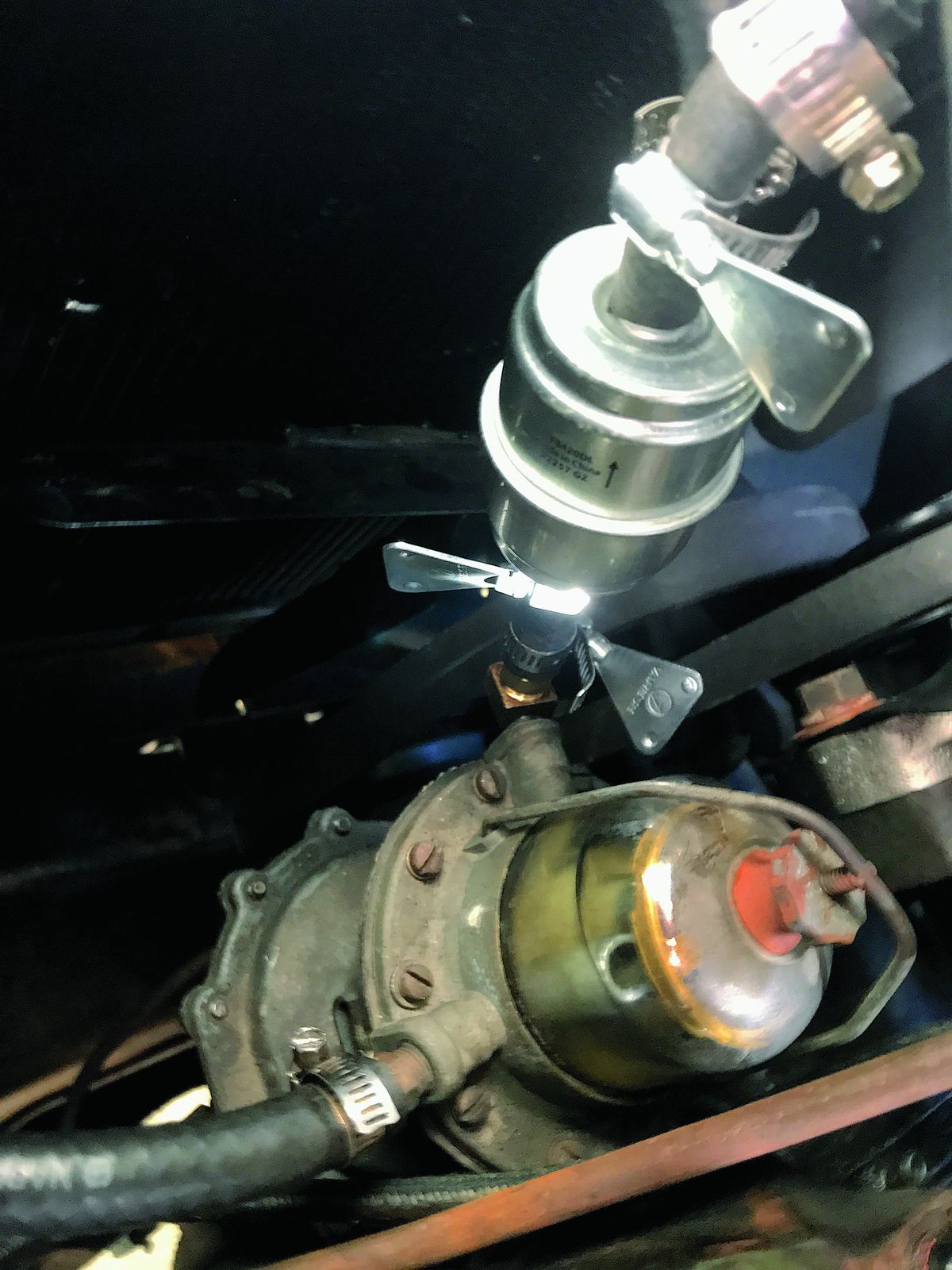Vapor lock is a common issue in classic cars with carbureted engines, especially during hot summer days. When fuel in the fuel lines and carburetor vaporizes due to excessive heat, it disrupts the fuel supply, causing the engine to stall. This problem has been present since the early days of internal combustion engines but has become more prevalent with modern ethanol-blended fuels. Ethanol has a lower boiling point than gasoline, making older vehicles more susceptible to vapor lock. If left unaddressed, vapor lock can leave classic car owners stranded on the road, especially after prolonged driving or idling in traffic.

How to Eliminate Vapor Lock
Thankfully, there is a reliable solution to prevent vapor lock and ensure smooth engine performance. The most effective method involves installing a vapor-separator fuel filter system. This setup allows continuous fuel circulation, reducing the chances of fuel overheating and vaporizing within the fuel lines. Unlike traditional fuel systems that rely on intermittent fuel flow, this method ensures a constant return of unused fuel to the gas tank, keeping the system cool and preventing vapor lock from occurring. The best part is that this modification is affordable, simple to install, and does not require major modifications to your vehicle’s original fuel system.
Installing a Return Fuel Line
One of the most important steps in preventing vapor lock is installing a return fuel line to keep fuel constantly moving through the system. This process involves connecting a three-outlet vapor-separator fuel filter that allows excess fuel to return to the tank instead of remaining stagnant in the fuel lines. Stagnant fuel absorbs engine heat, leading to vaporization and fuel starvation. Installing a return fuel line ensures fuel remains at a lower temperature, significantly reducing the likelihood of vapor lock. While routing the return line, it is essential to secure it properly along the vehicle’s chassis, away from hot exhaust components and moving parts.
Understanding How Vapor Lock Occurs
To fully grasp why vapor lock happens, it is essential to understand the mechanics of a carbureted fuel system. Unlike modern fuel-injected engines that maintain high fuel pressure, carbureted engines rely on a low-pressure mechanical fuel pump that intermittently sends fuel to the carburetor. The carburetor has a float-operated needle valve that opens and closes as needed, regulating the fuel supply. However, when the engine gets too hot, the fuel trapped in the lines before reaching the carburetor absorbs excessive heat, causing it to vaporize. When this occurs, the fuel pump struggles to push vapor instead of liquid fuel, leading to engine stalling and poor performance. Without a solution in place, vapor lock can make driving classic cars frustrating and unreliable.
Required Tools and Materials
Before starting the installation, gather the necessary tools and components to ensure a smooth process. You will need a high-quality vapor-separator fuel filter, such as the Duralast or Wix model, designed for classic carbureted vehicles. Additionally, you will require 3/16-inch steel fuel line for the return system, neoprene fuel hose for short connections, and sturdy hose clamps to secure all fuel lines in place. Essential hand tools include a tubing cutter, a tubing bender for precise shaping, a file to remove burrs, and a tape measure for accurate length adjustments. By having all materials on hand, the installation will be straightforward and efficient.

Step-by-Step Installation Guide
To successfully install the vapor-separator fuel filter system, follow these steps carefully:
Step 1: Locate the mechanical fuel pump in your vehicle and choose an accessible mounting position for the vapor-separator fuel filter. Ensure it is positioned close to the pump for optimal function.
Step 2: Securely install the vapor-separator fuel filter with its return outlet facing towards the fuel tank. This configuration allows excess fuel to flow back to the tank while maintaining a continuous supply to the carburetor.
Step 3: Cut the existing fuel line using a tubing cutter, ensuring clean and precise cuts. Insert the vapor-separator filter into the system by connecting it using neoprene fuel hoses and tightening the connections with hose clamps.
Step 4: Route the 3/16-inch steel return fuel line along the vehicle’s chassis, running parallel to the original fuel line. Avoid sharp bends and keep the line clear of any hot or moving components.
Step 5: Secure the return line firmly in place with clamps, ensuring no movement or interference with other parts of the vehicle.
Step 6: Start the engine and let it idle while checking for leaks. If everything is secure, take the car for a test drive to confirm the vapor lock issue has been resolved.
Conclusion
Vapor lock can be a frustrating and unpredictable issue for classic car owners, but it is entirely preventable with the right approach. By installing a vapor-separator fuel filter system and routing a return fuel line, you can ensure that your vehicle operates smoothly, even in extreme summer temperatures. The process is affordable, requires only basic tools, and can be completed in an afternoon. Once installed, you will no longer have to worry about unexpected stalls or long waits for your engine to cool down. Instead, you can enjoy uninterrupted cruising and get the most out of your classic car without the headaches of vapor lock.



